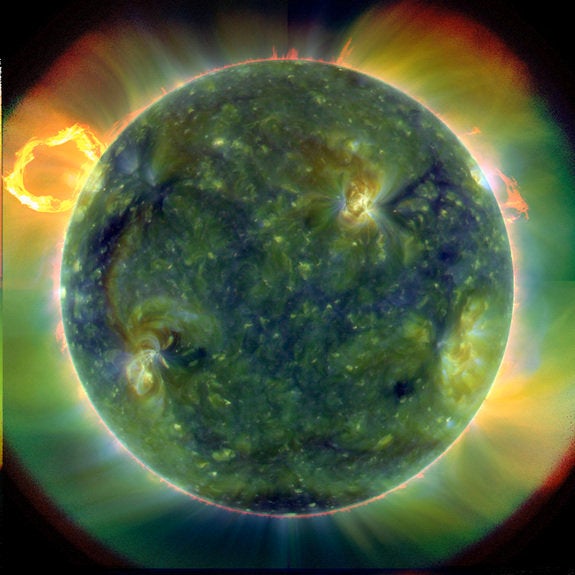K-I-S-S-I-N-G. That's what two massive stars are doing about 160,000 light-years from Earth in the nearby Large Magellanic Cloud galaxy, an international team of astronomers has discovered. But it turns out that the stars' smooch isn't a romantic one.
They're giving each other the kiss of death.
The stars make up the system VFTS 352, and the gravity coming from the stars has pulled them into each other, causing their surfaces to connect. Astronomers predict that the newly discovered stars eventually may either merge together to form a rapidly rotating monster star, or they may die in supernova explosions and form binary black holes.
"We were very excited to find this system," Selma de Mink, an astrophysicist at the University of Amsterdam and a co-author of a paper describing the stars, told The Huffington Post in an email. "We have found stars that touch before, but they are usually low mass. This is the hottest and most massive one where the stars touch so 'intimately.'"
The astronomers found the peculiar stars using the European Southern Observatory's Very Large Telescope, and they noticed that the stars' surfaces are overlapping.
"They even share 30 percent of their material," said Hugues Sana, an astronomer at the University of Leuven in Belgium who is a co-author of the paper. "Such type of binaries where the components' surfaces touch one another are called 'overcontact binaries.' VFTS 352 is the hottest and most massive overcontact binary known to date."
This overcontact binary is so hot, in fact, that the stars' surface temperatures exceed 72,000 degrees Fahrenheit.
Since the stars appear to be nearly identical in size, one may not overpower the other once they reach their demise, the astronomers said. But whether the two stars eventually merge or remain compact, the astronomers hope that their discovery will provide new insight about the complex physics that takes place when the components of a binary system interact with one another.
"The overcontact phase is one of the less-understood phases in the binary evolution," said Leonardo A. Almeida, an astronomer at the University of São Paulo in Brazil and lead author of the paper. "These systems are very rare, and only a handful of them are known ... So VFTS 352 is allowing us to lift a little bit of the veil on the physical processes that take place during the overcontact phase."
The astronomers' paper appeared in The Astrophysical Journal on Oct. 13.
Also on HuffPost:

